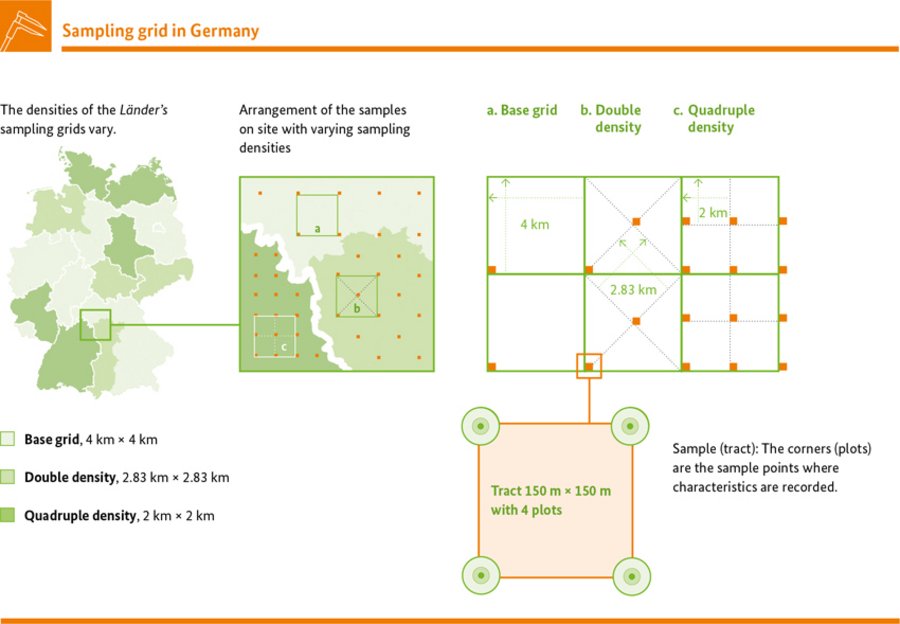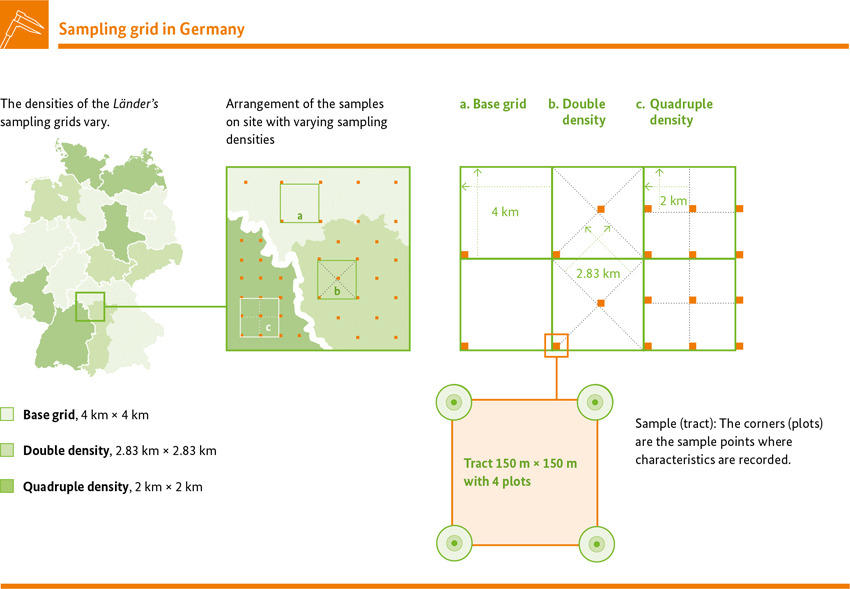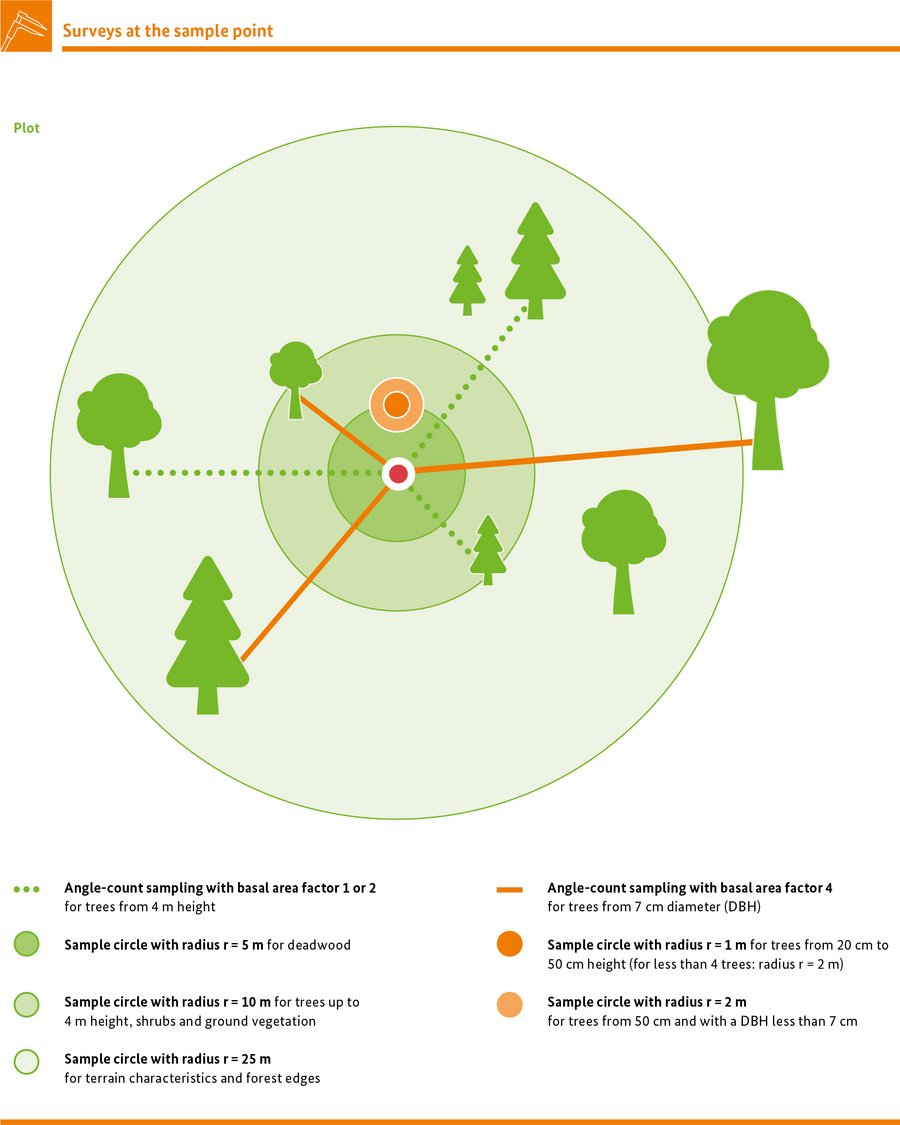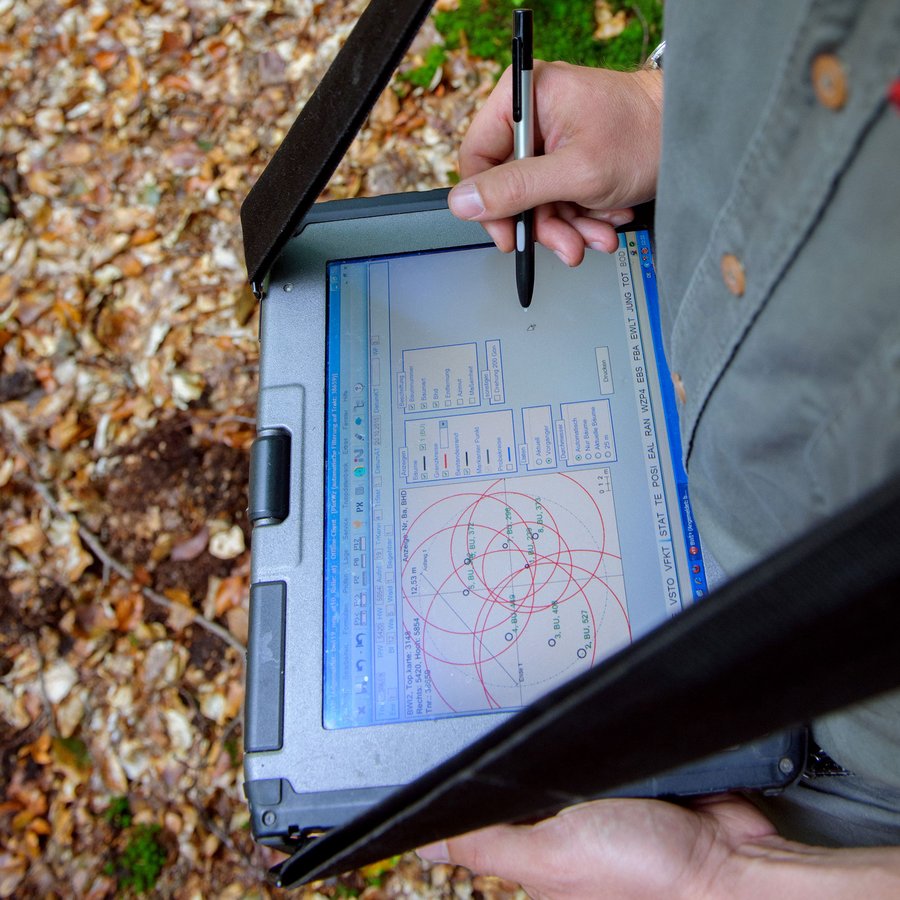It is based on a three-phase control system:
a) Controls during data entry: The inventory teams record the data with mobile field computers. Plausibility checks in the survey software are already run in the forest and indicate possible data errors. This means the inventory staff can correct the recorded data while still on site by re-measuring a value or survey and add overlooked values.
b) Controls of data collection: The Land inventory supervisors control on-site data collection at a minimum of 5% of the sample points, by recording trees and characteristics on site independently of the team.
c) Plausibility checks: The data in the survey database are sent to the central database. Using check runs and error logs, the Federal and Land inventory supervisors control the quality of the data compiled. The Land inventory supervisors either correct errors themselves, if possible, or demand that the respective inventory teams make the corrections.
![[Translate to Englisch:] Mit Bitterlich-Relaskop und Ultraschall-Entfernungsmessgerät werden die Stichproben-Bäume der Winkelzählprobe ermittelt [Translate to Englisch:] Mit Bitterlich-Relaskop und Ultraschall-Entfernungsmessgerät werden die Stichproben-Bäume der Winkelzählprobe ermittelt](/fileadmin/_processed_/c/1/csm_BWI_TI-WO_055_TI-FZChristinaWaitkus_b23a818d09.jpg)
![[Translate to Englisch:] Mit Bitterlich-Relaskop und Ultraschall-Entfernungsmessgerät werden die Stichproben-Bäume der Winkelzählprobe ermittelt [Translate to Englisch:] Mit Bitterlich-Relaskop und Ultraschall-Entfernungsmessgerät werden die Stichproben-Bäume der Winkelzählprobe ermittelt](/fileadmin/SITE_MASTER/content/bilder/BWI3/BWI_TI-WO_055_TI-FZChristinaWaitkus.jpg)







